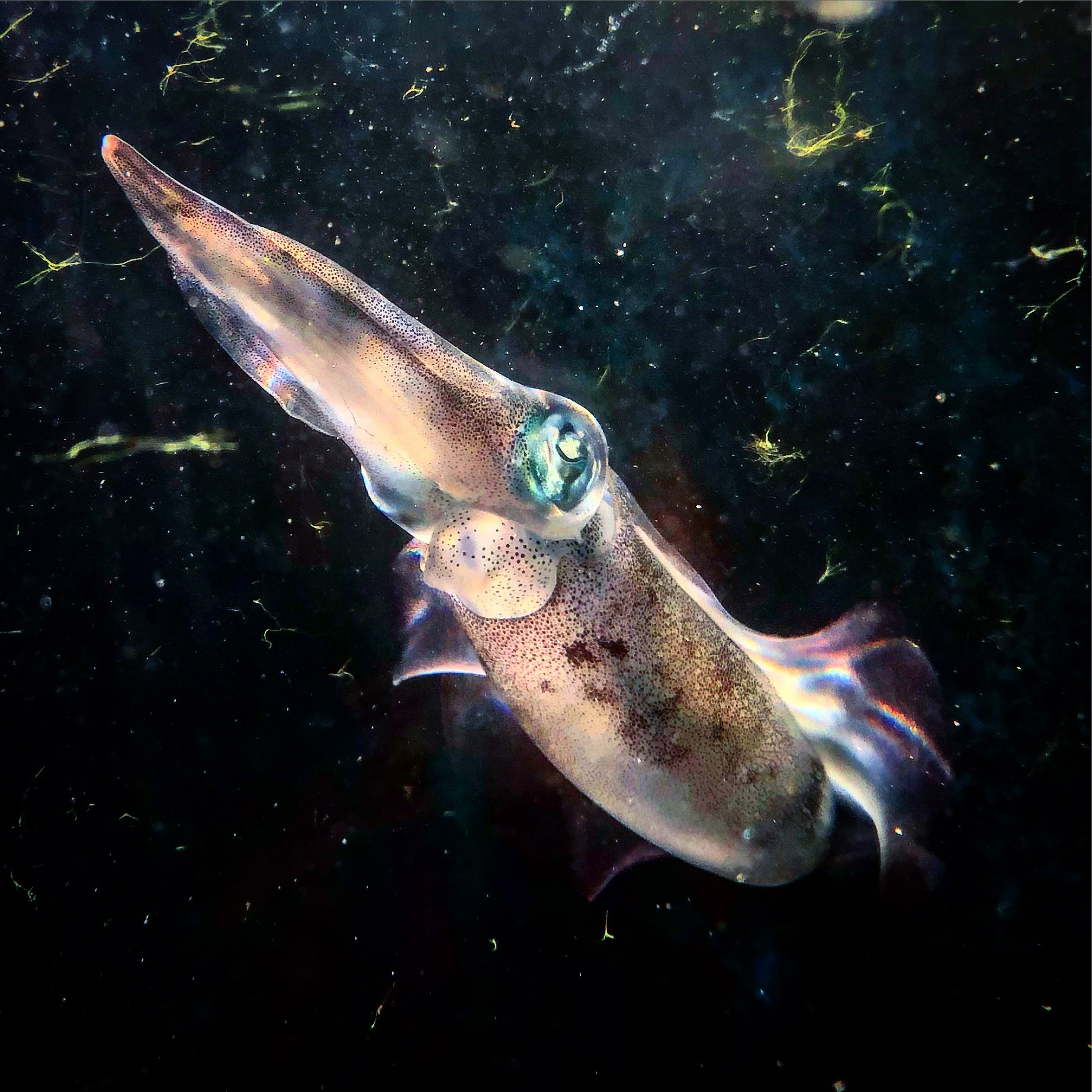While octopus and cuttlefish are famous for their use of camouflage to match the color of the substrate, a third type of cephalopod -- the squid -- has never been reported displaying this ability.
Now, in a study published in Scientific Reports, scientists from the Physics and Biology Unit at the Okinawa Institute of Science and Technology Graduate University (OIST) have shown that squid can and will camouflage to match a substrate as a way of avoiding predators. This work opens up research avenues on how squid see and perceive the world around them. Furthermore, it sheds light on their behavior, and thus could go on to inform conservation initiatives.
"Squid usually hover in the open ocean but we wanted to find out what happens when they move a bit closer to a coral reef or if they're chased by a predator to the ocean floor," explained one of the three first authors, Dr. Ryuta Nakajima, OIST visiting researcher. "If substrate is important for squid to avoid predation than that indicates that increases or decreases in squid populations are even more tied to the health of coral reef than we thought."
 Previous studies on cephalopod camouflage have mostly been conducted on cuttlefish and octopus. Squid, as an animal that tends to live in the open ocean, are notoriously hard to keep in captivity and so have been rather avoided for this kind of research. But, since 2017, the scientists in the OIST's Physics and Biology Unit have been culturing a species of oval squid in captivity.
Previous studies on cephalopod camouflage have mostly been conducted on cuttlefish and octopus. Squid, as an animal that tends to live in the open ocean, are notoriously hard to keep in captivity and so have been rather avoided for this kind of research. But, since 2017, the scientists in the OIST's Physics and Biology Unit have been culturing a species of oval squid in captivity.
This squid, locally known as Shiro-ika, is one of three oval squids found in Okinawa. When in the open ocean, they are light in color, meaning that they blend into the ocean surface and flickering sunlight above. But the researchers suspected that when they moved closer to the ocean floor, it would be a different story entirely.
At OIST's Marine Science Station, the oval squid were, almost accidentally, observed camouflaging to the substrate for the first time. The researchers were cleaning their tank to remove the algal growth. They noticed that the animals were changing color depending on whether they were over the cleaned surface or the algae.
Following this observation, the researchers performed a controlled experiment. They kept several squid in a tank and cleaned half of the tank, leaving the other half covered in algae. They placed an underwater camera inside the water and suspended a regular camera above, so they could capture and run statistical tests on any color changes.
The results were clear. When the squid were in the clean side of the tank, they were the light color. But when they were above the algae, they promptly became darker.
 A species of oval squid from Okinawa, locally known as Shiro-ika, is being cultured at OIST’s Marine Science Station. This animal exhibited amazing camouflaging abilities never before recorded in squid. Credit: Ryuta Nakajima / OIST.
A species of oval squid from Okinawa, locally known as Shiro-ika, is being cultured at OIST’s Marine Science Station. This animal exhibited amazing camouflaging abilities never before recorded in squid. Credit: Ryuta Nakajima / OIST.
The experiment uncovered an ability that had never previously been reported in squid. The researchers highlighted that as well as opening up exciting avenues for exploring the visual capabilities of the animal, the study also showed that substrate is clearly useful for these squid to survive.
"This effect really is striking. I am still surprised that nobody has noticed this ability before us," said another first author, Dr. Zdenek Lajbner. "It shows just how little we know about these wonderful animals."
Dr. Nakajima stated that this particular squid is important for Okinawa for economic and cultural reasons. "It was actually the local fishermen who were the first ones distinguishing three species of oval squids in Okinawa, long before the scientists," said Dr. Nakajima.
"We look forward to continuing to explore the camouflage capabilities of this species and cephalopods more generally," said Prof. Jonathan Miller, Principal Investigator of OIST's Physics and Biology Unit and the senior author of the research article.
By Lucy Dickie, Okinawa Institute of Science and Technology (OIST) Graduate University
Journal Reference:
Ryuta Nakajima, Zdeněk Lajbner, Michael J. Kuba, Tamar Gutnick, Teresa L. Iglesias, Keishu Asada, Takahiro Nishibayashi, Jonathan Miller. Squid adjust their body color according to substrate. Scientific Reports, 2022; 12 (1) DOI: 10.1038/s41598-022-09209-6


